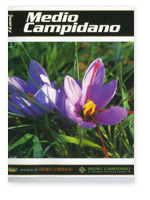Skip navigation bar and go to contents
Vivere la campagna
 Agricoltura
Agricoltura
 Ambiente
Ambiente
 Bilancio e Patrimonio
Bilancio e Patrimonio
 Consigliera di Parità
Consigliera di Parità
 Cultura
Cultura
 Formazione Professionale
Formazione Professionale
 Immigrazione/Emigrazione
Immigrazione/Emigrazione
 Innovazione Tecnologica
Innovazione Tecnologica
 Lavori pubblici e Viabilità
Lavori pubblici e Viabilità
 Lavoro
Lavoro
 Personale
Personale
 Pianificazione Territoriale
Pianificazione Territoriale
 Politiche giovanili
Politiche giovanili
 Politiche Sociali
Politiche Sociali
 Protezione civile
Protezione civile
 Pubblica Istruzione
Pubblica Istruzione
 Sport
Sport
 SUAP
SUAP
 Trasporti
Trasporti
 Turismo
Turismo
 URP
URP

n.26/2009 -
Starting from the 14th century we see the spread throughout Sardinia, together with religious architecture in Gothic-Catalan style, of a type of pictoriaI work already well represented in Spain: these are the retablos, panel paintings set behind the altar. The first works were created by Catalan artists who were present in Sardinia throughout the 15th century, especially in Cagliari, where the School of Stampace developed, from which the main Sardinian artists would emerge. Retablo paintings spread throughout the island, even in the small towns and villages: they were commissioned by the ruling class as a symbol of temporal and religious power. But the retablos, and the wooden sculptures also found in all towns and villages, are important not only for their artistic worth, but also for their role in popular devotion, which emphasized the cult of protector saints. Many works have been destroyed, others were transferred, but especially in Marmilla a number of retablos are stili to be found, offering a fascinating itinerary through the cultural heritage of this area of Sardinia. The parish church of San Pietro Apostolo at Tuili houses the Whitsun retablo (1534) and the retablo of the Maestro of Castelsardo, an imposing altarpiece measuring 350 x550 cm set in the first chapel on the right. This work dating from the 1500s was painted in oil-bound distemper on wood; the centraI scene shows the enthroned Virgin surrounded by musician angels as in all painted scenes of the period and surmounted by the crucifixion. On alI the panels making up the retablo the background landscape and figures are depicted in detail. At Gonnostramatza in the apse of the parish church of San Michele Arcangelo (15th-18th centuries) we find a retablo dated 1501 by Lorenzo Cavaro, the founder of the School of Stampace. In the centre we see the enthroned Virgin with the Child surmounted by the crucifixion, and to the sides Saints Peter and Paul; various other saints are shown in the predella. Another important retablo can be admired in the parish church of Villamar. Painted in 1518 by Pietro Cavaro, the principal artist of the Stampace School, it shows the "Virgin of the Milk” in late Gothic style with clear Spanish influences which are present both in the precious wooden sculptures and in the civil and religious architecture of this municipality, which has no less than eight churches. The retablo of Santa Maria in the parish church of Lunamatrona is thought to be the work of Antioco Mainas who carried forward the Gothic-Catalan cultural tradition, but adding several less formal and more popular motifs such as the embracing of the Mother by the Holy Child in the centre of this work and the poses of the Saints of the predella. Here we also find a wooden pulpit dating from the 16th century in popular style and a wooden statue of Saint Francis, dated between the late 17th and early 18th centuries. Antioco Mainas is also the author of the retablo of Sant'Anna dated 1576, in the parish church of Sanluri; another important work, the retablo of Sant'Eligio by the Maestro of Sanluri, is held in the National Gallery (Pinacoteca Nazionale) of Cagliari. At Ussaramanna in the church of San Lorenzo visitors can still see the two surviving panels by the Maestro of Oliena (16th century).